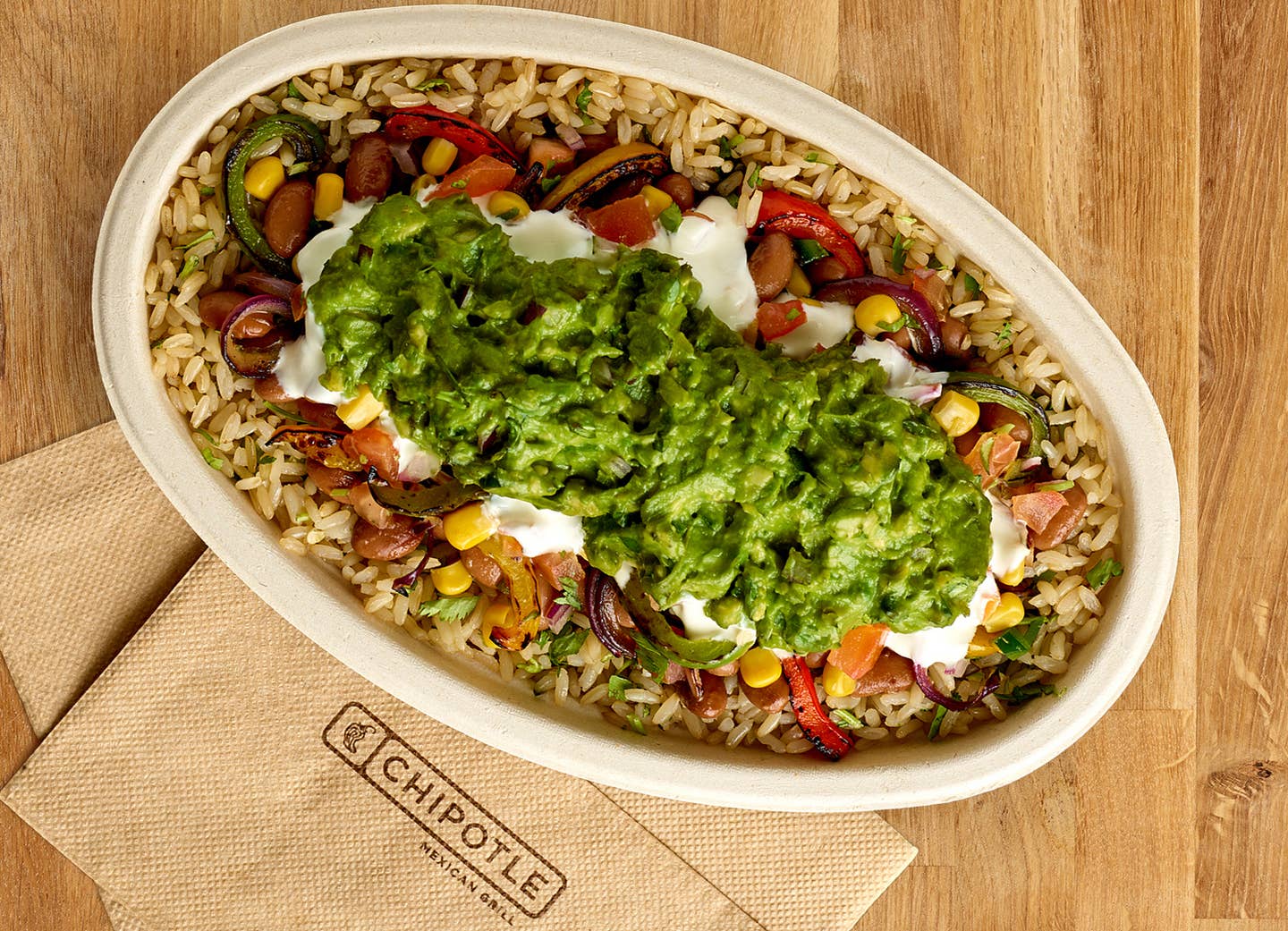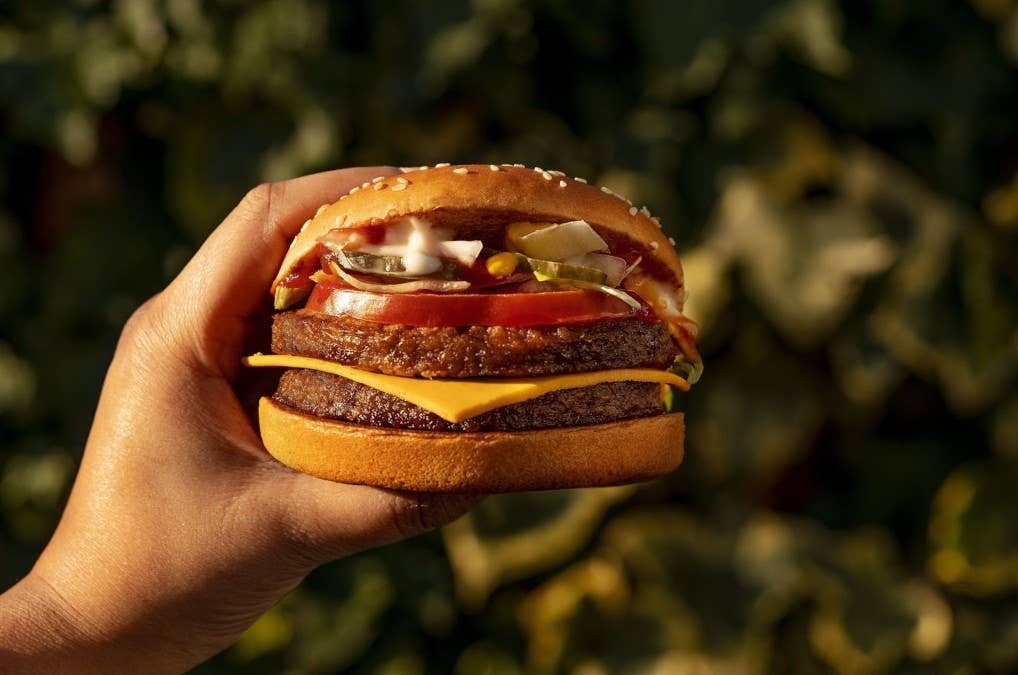
FDA Gives Lab-Grown Chicken the Green Light. Would You Try It?
Americans can expect to see cultivated chicken –– also called cultured or cell-based meat –– on grocery shelves nationwide in the near future. This week, Upside Foods became the first company to receive the 'No Questions' letter from the U.S. Food and Drug Administration, which gives the food tech company a "green light" for its cultivated chicken product. This letter follows years of rigorous evaluations conducted by the government organization.
“This is a watershed moment in the history of food,” Dr. Uma Valeti, CEO and Founder of Upside Foods, said. “We started Upside amid a world full of skeptics, and today, we’ve made history again as the first company to receive a ‘No Questions’ letter from the FDA for cultivated meat. This milestone marks a major step towards a new era in meat production, and I’m thrilled that U.S. consumers will soon have the chance to eat delicious meat that’s grown directly from animal cells.”
Since its founding in 2015, the food tech company has aimed to produce a sustainable chicken product without the need for animal agriculture. This process would greatly reduce the environmental strain and animal-borne disease risks of factory farms. Now, the FDA has established the cultivated chicken filet as safe to eat, paving the way for commercial sale.
Before commercial sale, however, Upside Foods will need to work with the USDA to secure the remaining approvals. While these products are not considered vegan or plant-based, Upside Foods aims to create a conventional meat alternative that appeals to the American public that also minimizes slaughter and greenhouse emissions. The company believes this product can curb American chicken consumption, which is estimated at 100 pounds per person per year.
“Since our earliest days, our top priority has been to ensure the safety and quality of our products,” Eric Schulze, Ph.D., VP of Regulatory and Public Policy at Upside Foods, said. “FDA sets the standard for global acceptance of new food innovations, and we are incredibly grateful for the agency’s rigorous and thoughtful process to ensure the safety of our food supply. We’re also extremely proud to have played a leading role in helping to champion the framework for how cultivated meat, poultry, and seafood are regulated in the U.S.”
Upside Foods Anticipates Commercial Sale of Cultivated Chicken
Following its $400 million Series C funding round, Upside Foods exceeded a valuation of $1 billion. Even though the company still requires full approval from the USDA, Upside is working on perfecting its production process within the US. Last November, the company unveiled its biggest manufacturing center, aptly called EPIC. The custom-made cultivators can produce 50,000 pounds of cultivated meat per year, but the food tech company projects the facility will eventually be capable of 400,000 per year.
In recent years, the company has launched the Alliance of Meat, Poultry, and Seafood Innovation –– the world's first trade coalition for cultivated meat. The organization intends to help facilitate the growing cell-based meat industry as the companies approach full regulatory approval.
Cultivated Chicken and Fine Dining
Last August, Upside Foods also invited acclaimed chef Dominique Crenn to join its culinary development team. The chef, known for San Fransico fine dining establishment Atelier Crenn, will help the company test its chicken product for food service use. Crenn revealed that she will add the cultivated chicken to her famously meatless menu following regulatory approval.
“When I tasted UPSIDE Chicken for the first time, I thought, this is it. This is the future of food. The look, smell, and sear — UPSIDE Chicken is just delicious,” Crenn said at the time. “People are finally waking up to the downsides of conventional meat production, which led me to remove meat from my menus several years ago.”
The Growing Cultivated Meat Industry
Upside Food might be the first food tech company to receive the "Green Light" within the United States, but Eat Just's GOOD Meat brand launched its cultivated chicken in Singapore in early 2021. Eat Just is working closely with ABEC Inc to increase its production capabilities in both Asia and the United States. This May, the company announced that it would begin building a production facility with 10 250,000-liter bioreactors that will become operational by 2024.
The cultivated meat market has caught the attention of environmentally-motivated investors that include celebrities like Ashton Kutcher and Leonardo DiCaprio. The Good Food Institute found that cultivated beef production would reduce global warming risks by 92 percent when compared to conventional beef farming.
For more plant-based happenings, visit The Beet's News articles.
Top 10 Sources of Plant-Based Protein According to a Nutritionist
1. Seitan
Protein: 21 grams in ⅓ cup (1 ounce) Seitan isn’t as popular as other proteins, but it should be! Made from wheat gluten, its texture resembles ground meat. It’s often used in pre-made veggie burgers or meatless nuggets. Seitan has a savory taste, like mushrooms or chicken, so it works well in dishes that call for an umami flavor. With a hearty texture, seitan can be the star of practically any vegan main dish. Add it to stir-fries, sandwiches, burritos, burgers, or stews. Like tofu, seitan will take on the flavor of any marinade or sauce.
2. Tempeh
Protein: 16 grams in 3 ounces If you like a protein with a bit of bite, add tempeh to your list. Made from fermented soybeans, tempeh has a slightly nutty flavor and is pressed into a block. Most varieties include some sort of grains, such as barley or millet. Not only is tempeh a plant-based source of protein, but the fermentation process also creates good-for-your-gut probiotics. You can cut tempeh right off the block and use it as the base for a sandwich or pan-fry it with some sauce. Or, crumble, heat, and make it the star of your next taco night.
3. Lentils
Protein: 13 grams in ½ cup cooked Lentils come in multiple varieties--red, yellow, green, brown, black. Regardless of the type lentils are small but mighty nutritional powerhouses. They pack a good amount of protein as well as iron, folate, and fiber. When cooked, brown lentils retain their texture and can be the base for a grain bowl or make a hearty substitute for ground meat in meatballs, lasagna, tacos or Bolognese. Red lentils are a bit softer and make a nice add-in for a hearty soup, chili, or stew.
4. Hemp Seeds
Protein: 10 grams in 3 tablespoons Hemp seeds are a tender and nutty seed, derived from the hemp plant. They contain good amounts of omega-3s, iron, folate, magnesium, phosphorus, and manganese. They are also a solid source of both soluble and insoluble fiber, which helps to keep your digestive tract healthy and humming. Because they pack a double whammy of protein and healthy fats, hemp seeds can help satisfy hunger, preventing those embarrassing stomach growls as you slog your way to your lunch break. Add them to your morning smoothie or sprinkle them on top of yogurt, oatmeal, or even a salad.
5. Tofu
Protein: 9 grams in 3 ounces (⅕ of a block) Made from coagulated soybeans, tofu is the most popular plant-based protein. Soy is one of the only meatless "complete" proteins, meaning that it contains all of the essential amino acids that the body can’t make but needs for muscle and immune function. With 15% of your daily calcium needs, tofu is also a good replacement for dairy.
6. Edamame
Protein: 9 grams of protein in ½ cup This sushi appetizer is a nutrient powerhouse, so eat it anytime. Edamame is really just another name for soybeans in their pods. Let’s list off some stats--a small ½-cup serving of edamame has 9 grams of protein, 15% of your daily vitamin C, 10% of your daily iron and 16% of your daily fiber. Keep a bag of edamame in your freezer to serve as a fun-to-eat side dish or opt for the shelled variety to toss into salads or a grain bowl.
7. Quinoa
Protein: 8 grams per cup (cooked) Quinoa is an ancient grain and since it's gluten-free a great choice for anyone avoiding gluten. Add it to your burger recipe to create filling texture, or instead of meat in your taco or burrito. Quinoa is among the healthiest foods on the planet, delivering phytonutrients that have anti-inflammatory qualities, so keep it in your pantry for any meal that needs a filling grain. Just remember to soak it and rinse before cooking to get rid of any bitter taste.
8. Black Beans
Protein: 7 grams in ½ cup (canned) Eating beans on the regular might as well be a prerequisite for a plant-based diet. Not only are canned black beans inexpensive, but they also contribute 10% of your daily iron and 25% of your daily fiber to your diet. For less than $1 a can, beans can be the star of tacos, quesadillas, salads, soups, burgers, or dips.
9. Amaranth
Protein: 6 grams in ⅔ cup (cooked) Chances are you’ve never cooked amaranth. But you should, since this tiny, gluten- free grain is packed with almost 30% of your daily fiber and 20% of your daily iron. Cook it like a traditional grain to yield a soft, porridge-like texture. Many people add amaranth to other a hot breakfast cereal mixture, like oats and quinoa. It also pops like popcorn. Toss it in a pot with some oil and wait for it to pop up into a nutritious snack.
10. Peas
Protein: 5 grams in ⅔ cup If peas were one of your most hated veggies as a kid, it’s time to give them another chance. These green beans are a great low-calorie protein to keep in your freezer. Sure, they don’t always taste great when steamed or microwaved (who wants to eat mushy, overcooked peas?), but they do blend well into a yummy puree that can be slathered on toast. To amp up the flavor, add some lemon juice or mint to your mix before you blend.
More From The Beet






